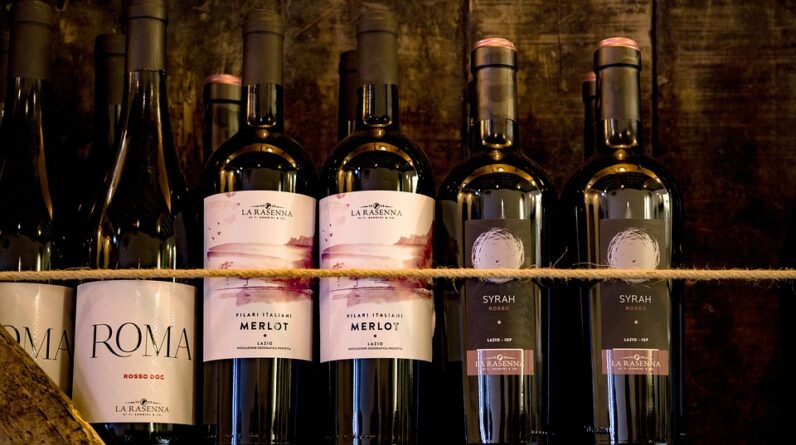Looking to bring a taste of Italy into your kitchen? Look no further than this authentic Italian Saltimbocca recipe. This classic dish features thin slices of veal, topped with prosciutto and sage leaves, then pan-fried to perfection. But the magic doesn’t stop there – it’s all brought together with a flavorful white wine and butter sauce. Whether you’re a seasoned chef or just starting out, this recipe is sure to impress your taste buds and transport you straight to the heart of Italy. So grab your apron, tie on your chef’s hat, and get ready to create a culinary masterpiece in the comfort of your own home. Bon appétit!
Ingredients
To prepare authentic Italian Saltimbocca, you will need the following ingredients:
Veal slices
Veal slices are the base of this delicious dish. They should be thin to ensure faster cooking and to maintain the tenderness of the meat.
Prosciutto
Prosciutto adds a savory and salty flavor to the dish. It is an essential ingredient in traditional Saltimbocca recipes.
Sage leaves
Sage leaves bring a unique herbal aroma and taste to the Saltimbocca. They complement the flavors of veal and prosciutto perfectly.
White wine
White wine is used to deglaze the skillet and create a flavorful sauce for the Saltimbocca. It adds depth and richness to the dish.
Butter
Butter is used for both cooking the veal slices and creating the sauce. It adds richness and enhances the flavors of the dish.
Flour
Coating the veal slices with flour helps create a crispy and golden crust when cooked in the skillet.
Salt
Salt is a basic seasoning that enhances the flavors of the ingredients and brings out the natural taste of the dish.
Pepper
Pepper adds a subtle kick of spice to the Saltimbocca, balancing the flavors of the veal, prosciutto, and sage.
Preparation
To prepare the Saltimbocca, follow these simple steps:
Prepare the veal slices
Start by ensuring that your veal slices are ready for cooking. They should be thin and of equal thickness for even cooking.
Place a slice of prosciutto on each veal slice
Lay a slice of prosciutto on top of each veal slice. The prosciutto will add a delightful saltiness and enhance the overall flavor of the dish.
Place a sage leaf on top of the prosciutto
Gently place a sage leaf on top of the prosciutto. The sage leaf will infuse the dish with a fragrant herbal aroma and taste.
Secure the sage leaf with a toothpick
Using a toothpick, carefully secure the sage leaf on top of the prosciutto. This will help keep the ingredients together while cooking.
Coat the veal slices with flour
Lightly coat each veal slice, along with the prosciutto and sage, with flour. This will create a crispy and golden crust when cooked.
Season with salt and pepper
Sprinkle a pinch of salt and a dash of pepper over the floured veal slices. Seasoning will enhance the overall taste of the Saltimbocca.
Heat butter in a skillet
In a skillet, melt a generous amount of butter over medium heat. The butter will bring a rich and creamy flavor to the dish.
Cook the veal slices in the skillet until golden brown
Place the veal slices, prosciutto-side down, in the skillet. Cook them until they develop a beautiful golden-brown color on both sides.
Remove the veal slices from the skillet
Once the veal slices are cooked, carefully remove them from the skillet and set them aside. Keep them warm while preparing the sauce.
Deglaze the skillet with white wine
Using the white wine, deglaze the skillet by pouring it into the hot pan. This will help loosen any flavorful bits stuck to the bottom.
Add butter to the skillet to create a sauce
Add another knob of butter to the skillet and let it melt. The butter will combine with the wine, creating a rich and flavorful sauce.
Return the veal slices to the skillet
Place the veal slices back into the skillet, ensuring they are evenly coated with the sauce. This will allow them to simmer and soak up the flavors.
Simmer the veal slices in the sauce for a few minutes
Let the veal slices simmer in the sauce for a few minutes to allow the flavors to meld together. This will ensure each bite is bursting with deliciousness.
Serving
To serve the authentic Italian Saltimbocca:
Remove the toothpicks from the veal slices
Before plating the Saltimbocca, carefully remove the toothpicks that secured the sage leaves. Be cautious to avoid any burns or accidents.
Plate the veal slices
Arrange the veal slices on a serving plate. Make sure to present them neatly, showcasing their golden-brown crust and the layered ingredients.
Pour the sauce over the veal slices
Drizzle the flavorful sauce from the skillet over the plated veal slices. The sauce will add moisture and intensify the flavors of the dish.
Garnish with fresh sage leaves
For an extra touch of freshness and elegance, garnish the Saltimbocca with a few fresh sage leaves. This will enhance the visual appeal and aroma of the dish.
Variations
If you want to explore different versions of Saltimbocca, here are some tasty variations to try:
Chicken Saltimbocca: Substitute veal with chicken breast
For a twist on the classic recipe, replace the veal slices with chicken breast. The chicken will still pair beautifully with prosciutto and sage.
Vegetarian Saltimbocca: Substitute veal with eggplant slices
Vegetarians can enjoy a delicious Saltimbocca by using thin slices of eggplant instead of veal. The eggplant will absorb the flavors and offer a satisfying meaty texture.
Seafood Saltimbocca: Substitute veal with fish fillets
If you’re a seafood lover, try using fish fillets as a substitute for veal. The delicate and flaky fish will harmonize with prosciutto and sage, creating a delightful combination.
Tips
Here are some handy tips to ensure your Saltimbocca turns out perfect:
Choose thin veal slices for faster cooking
Thinner veal slices cook more quickly and evenly, ensuring that the Saltimbocca retains its tenderness. Look for slices of equal thickness to ensure consistent cooking.
Use high-quality prosciutto for the best flavor
When it comes to prosciutto, opt for a high-quality variety. The superior flavor of the prosciutto will elevate the overall taste of the Saltimbocca.
Don’t overcook the veal slices to maintain tenderness
To maintain the tenderness of the veal, avoid overcooking. Veal is delicate and should be cooked until it reaches a perfect golden-brown color, ensuring it remains juicy and tender.
Experiment with different herbs for additional flavors
While sage is the traditional herb used in Saltimbocca, don’t be afraid to experiment with other herbs. Basil, thyme, or rosemary can add unique and delightful flavors to the dish. Let your taste buds be your guide.
Now that you have the comprehensive recipe and variations, you can confidently prepare authentic Italian Saltimbocca. Enjoy the delightful combination of flavors that this classic dish offers, and don’t forget to share it with friends and family. Buon appetito!










